The rotary-engined NSU Ro80 was regarded by some as Europe’s best production saloon of the late 1960s.
Voted Car of the Year for 1968 for its overall refinement as well as that smooth-as-silk Wankel engine, it could have changed the face of motoring forever.
But the seeds of its destruction lay in that initially fragile power unit, and NSU was eventually subsumed within the modern Audi company.
We look at the car that promised so much, but flew too close to the sun.
NSU were unlikely trailblazers, traditionally makers of motorcycles, scooters and small, rear-engined cars.
But in 1967, the men from Neckarsulm stunned the motoring world by producing a compact prestige saloon that earned rave reviews for its innovation, quality, and styling.
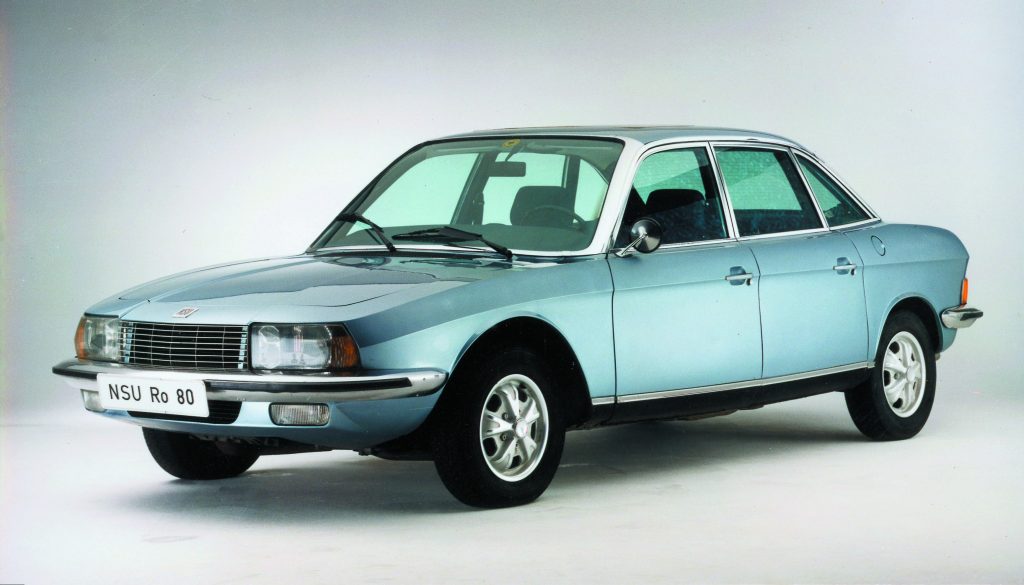
The Ro80 wasn’t the first rotary-engined production car – that honour goes to the same company’s baby Spider sports car – but it was the first attempt at putting Felix Wankel’s technology to work in a full-size saloon.
It was the result of years of collaboration between NSU and Wankel, which began in 1951 and ramped up with a joint development venture with Mazda in the early 1960s.
A host of carmakers from Citroen to Rolls-Royce, and Alfa Romeo to Ford, took out licences to make their own rotary engines, but only NSU and Mazda were determined to overcome the many early teething troubles.
NSU’s development of the Wankel engine
Wankel’s engine, which dated back to a patent in 1934, required significant work before it could be used in a production vehicle.
In Wankel’s original DKM engine the trapezoidal rotor and its housing both rotated around a central shaft in a perfect circular motion.
But it was considered too complicated and impractical, so NSU’s head of research Walter Froede decided to develop fellow NSU engineer Hanns-Dieter Paschke’s slightly different take on the rotary concept, and the KKM engine was born.
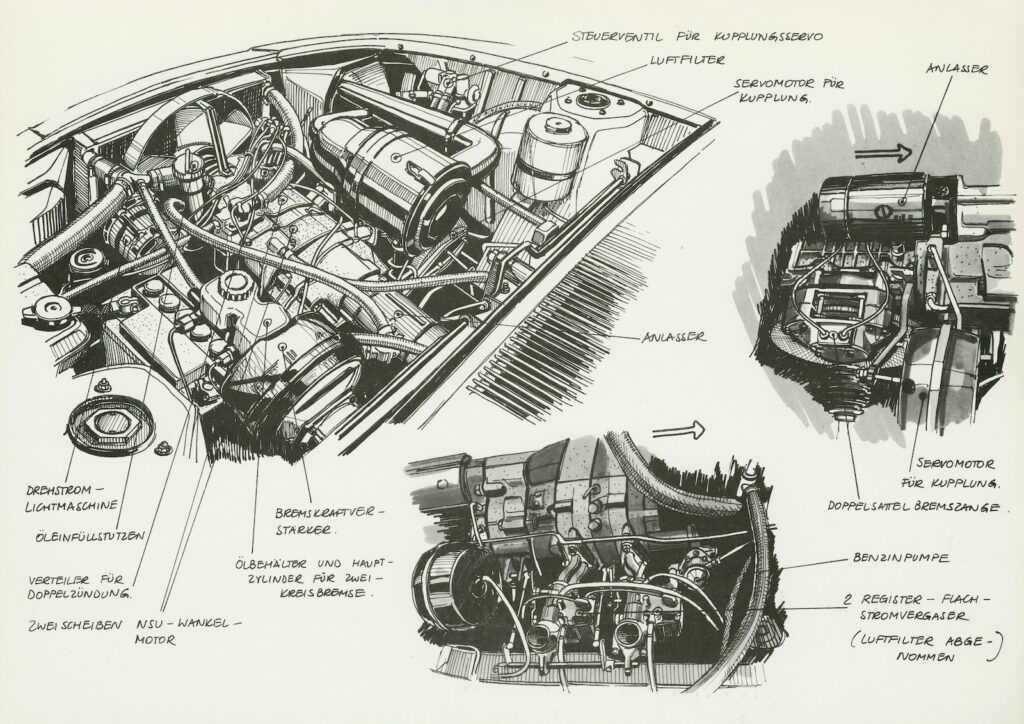
The new unit featured a stationary housing, inside which the three-tipped rotor would revolve through a roughly oval chamber, the rotor tips passing over inlet and exhaust ports, with the air fuel mixture compressed and ignited by twin spark plugs.
Wankel was not happy, complaining that his “race horse” had been turned into a “plough horse”, and warned that the swinging hula-hoop motion of the rotor would place too much stress on the three apex seals.
It was this KKM, single-rotor engine that was used in 1964’s groundbreaking NSU Spider, the first rotary-powered production car, its 498cc unit producing a very healthy 50hp at 5,500rpm.
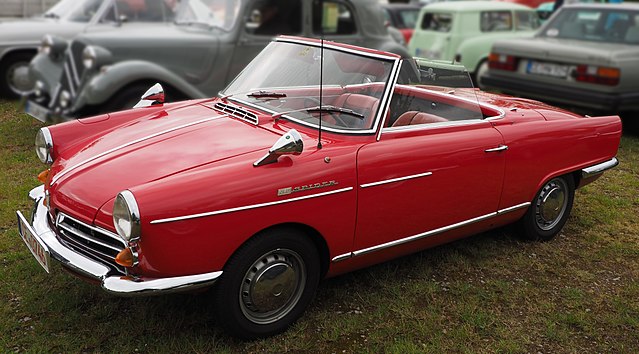
Just 2,375 Spiders were built over three years up to 1967 as the company effectively used it as a halo car and rolling testbed for the Wankel engine.
Despite teething troubles, the engine’s smoothness won plaudits and the car did well enough to convince NSU to press ahead with audacious plans for a luxury saloon, known internally as typ 80, to rival the likes of Mercedes-Benz.
The company was convinced it could iron out the rotary engine’s reliability glitches.
Birth of the NSU Ro80
The Ro80 (from ‘rotary’ and ‘typ 80’) debuted at the Frankfurt motor show in 1967, showing off a futuristic, slippery wedge shape penned by Claus Luthe, later of BMW E30 3-series fame.
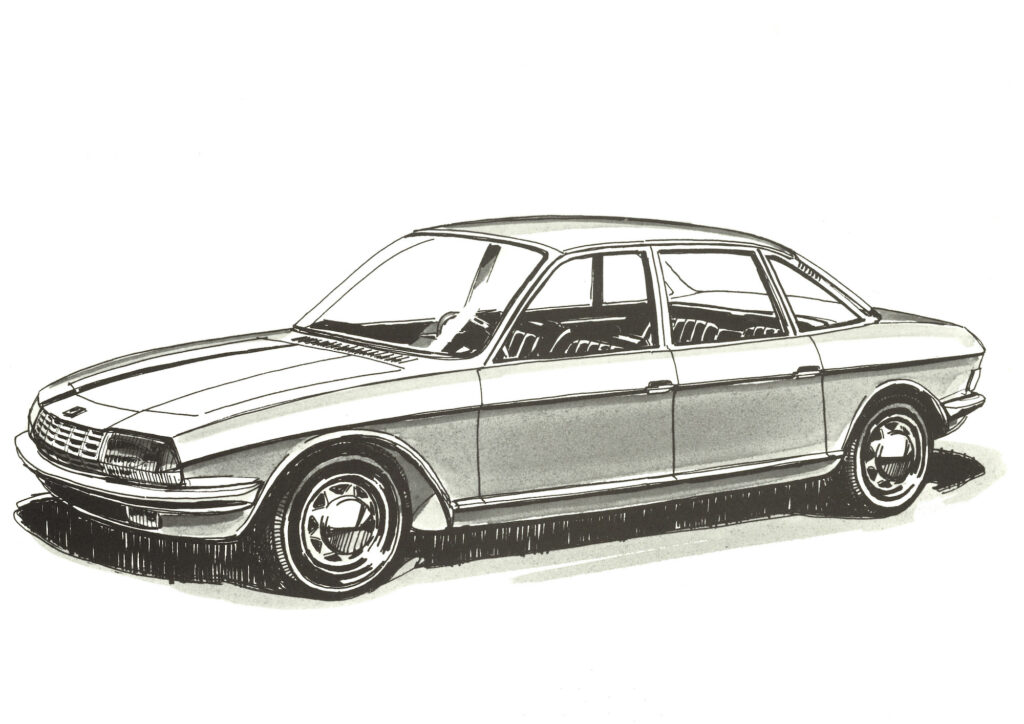
With a drag coefficient of just 0.335, the Ro80 was much more streamlined than other saloons of the day, and CAR magazine wrote that “the whole thing has that air of being designed by one very competent man”.
The car was well-proportioned, in many ways a forerunner of the modern Audi saloons, with a large glasshouse atop a body that swept gradually upwards from its tapered, curved nose to a vast boot.
It was designed from scratch to go around the Wankel engine which, because of its light weight and compact dimensions, was placed ahead of the front axle to allow for a shorter body shell while retaining plenty of interior space.
A heavier, conventional engine in this position would have compromised the car’s balance and handling. Moving such a power plant back would have necessitated a much longer body to retain the same room inside.
But the rotary engine wasn’t the only advanced feature of the front-wheel-drive Ro80.
NSU meant business, including power disc brakes all round, four-wheel independent suspension, Fichtel & Sachs semi-automatic, three-speed transmission linked to a vacuum servo operated clutch, and a power steering setup described as “ingenious” by the CAR testers.
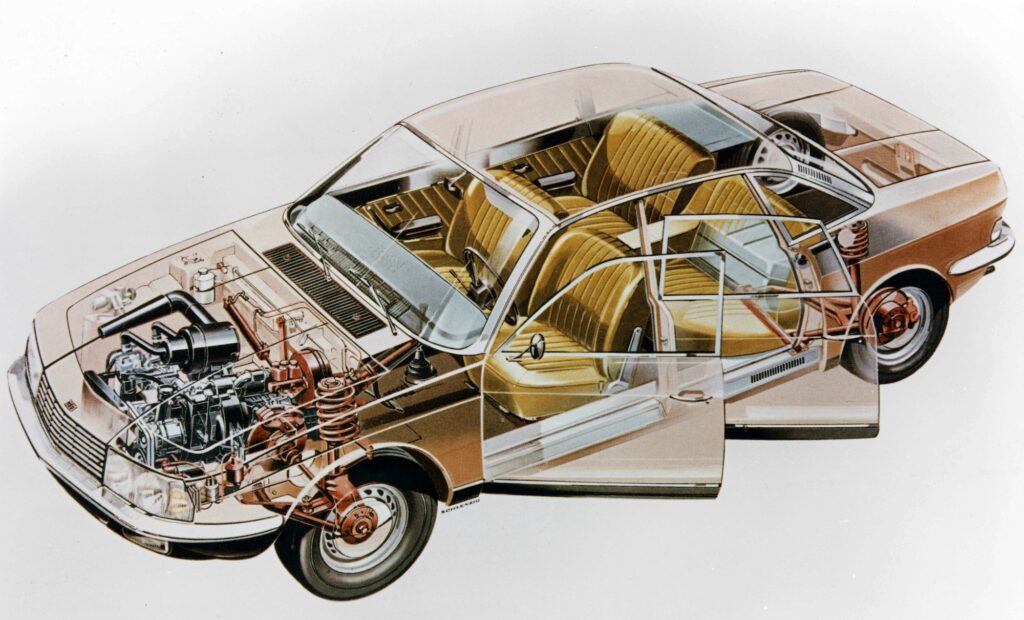
“We doubt whether we have yet met a power steering setup the equal of the Ro80’s,” they wrote. “There is no apparent delay in response…the car simply goes where you aim it, reacts instantly to steering wheel movement, and cooperates to the hilt when one is thrashing along a self-imposed special stage.”
This version of the Wankel engine was a twin-rotor, twin-spark design, with a total capacity of 994cc, producing 113bhp at 5,500rpm – comparable with 2-litre piston engines of the time.
Inside, the Ro80 was furnished in quiet good taste, with typically Germanic individual front seats and pleated leather or broadcloth trim. It was roomy, and comfortable, with great all-round visibility.
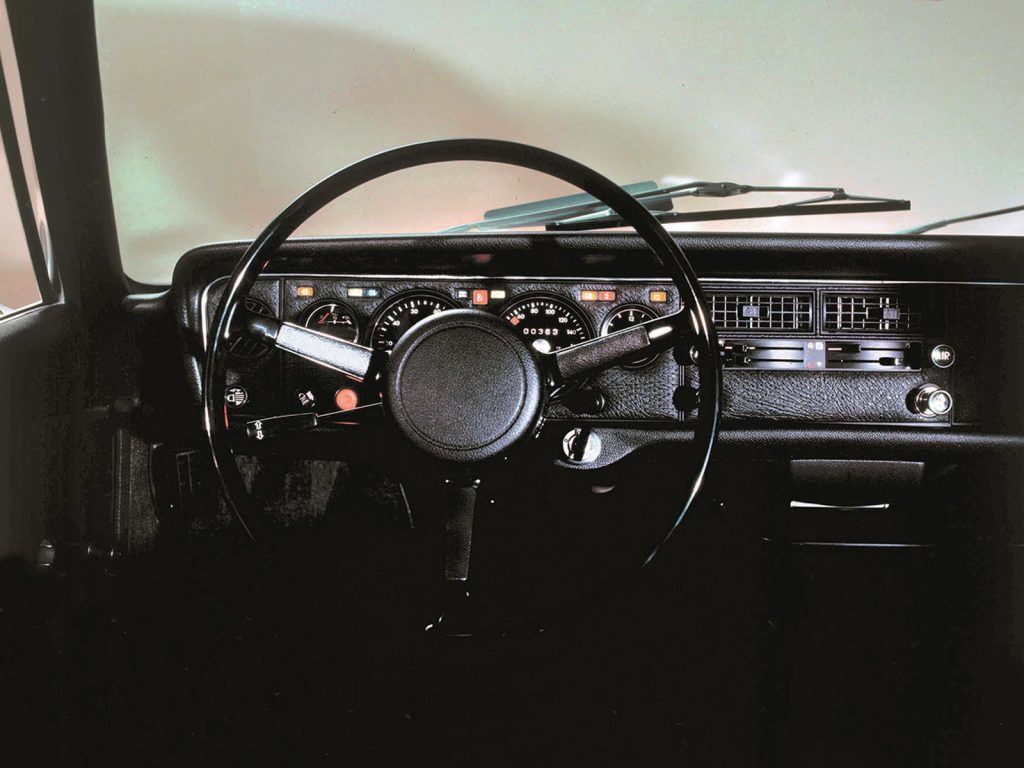
Ro80 off to a good start
The NSU Ro80 promised much and, at first, its bold move into the executive car market looked like paying off, with arguably the first truly revolutionary car since the Citroen DS.
Potential buyers joined a lengthening waiting list to be part of a new dawn in motoring engineering, and road testers were generous in their praise of the company’s first full-sized car.
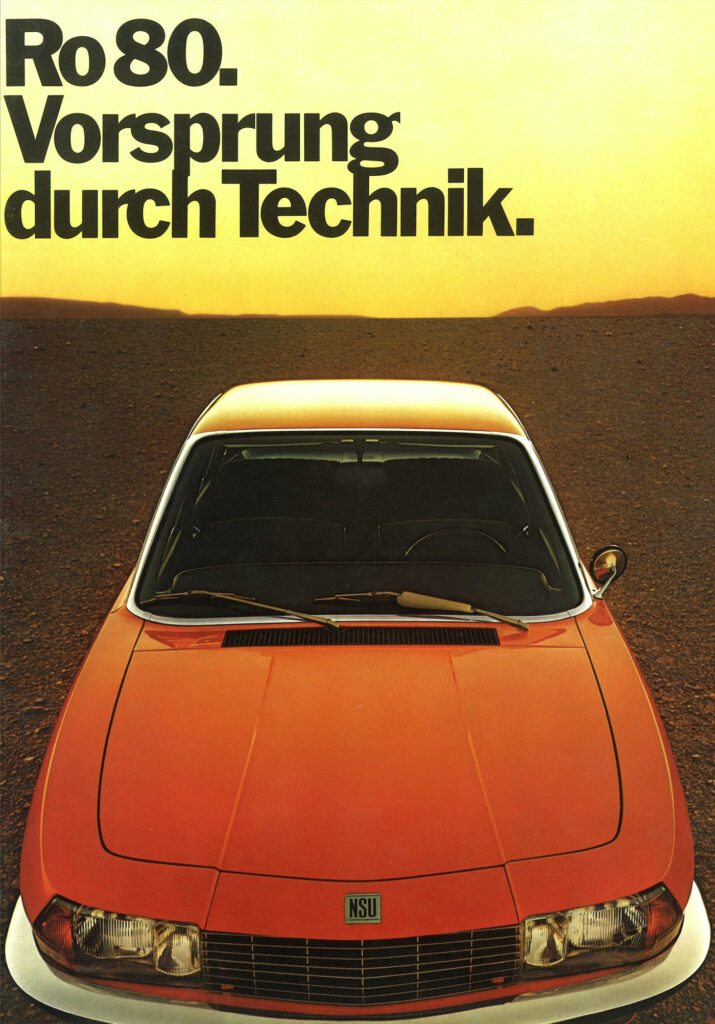
The true glory of the rotary engine was, of course, its smoothness, with no pistons hammering up and down inside cylinders.
True, it lacked low-down torque and was never a 0-60mph racer, but it more than made up for it with the sheer ease of its high-speed cruising.
According to CAR, “to experience the real magic of the Ro80 you will certainly need to get it away from the 70mph limit and cruise it on an autobahn or autoroute at 100mph for an hour or two”.
“It is as relaxed and quiet as any car we know at that speed, and really does introduce you to a new experience,” the magazine wrote.
Adrian Flux Classic Car Insurance
“There are American cars as quiet under the bonnet, and almost as smooth, but so free from extraneous noises nor anything like so well endowed with the other essentials of relaxed motoring – steering, stability and brakes.
“As a complete newcomer to this sector of the market, the Ro80 would have been a worthy contender, we suspect, even with a conventional engine.”
Motor magazine put forward the Ro80 as not only car of the year, but car of the decade.
“The Wankel engine has already surpassed in smoothness and refinement, particularly at high speeds… an equivalent piston engine, and at least equalled them on performance. The steering, handling and roadholding are probably better individually and almost certainly collectively than those of any other luxury car we have tried.”
“Remarkable NSU”
Motorsport magazine’s Bill Boddy had been monitoring NSU and Mazda’s progress with rotary engines for some time, driving both the Spider and Japanese company’s Cosmo 110S, a “very fine sports car”.
The step from the single rotor, rear-engine Spider to a twin-Wankel, front-engined saloon was “a formidable step”, but one the engineers from Neckarsulm took with aplomb.
Again, it’s in the wide open spaces and on longer runs that Boddy felt the “remarkable NSU” came into its own.
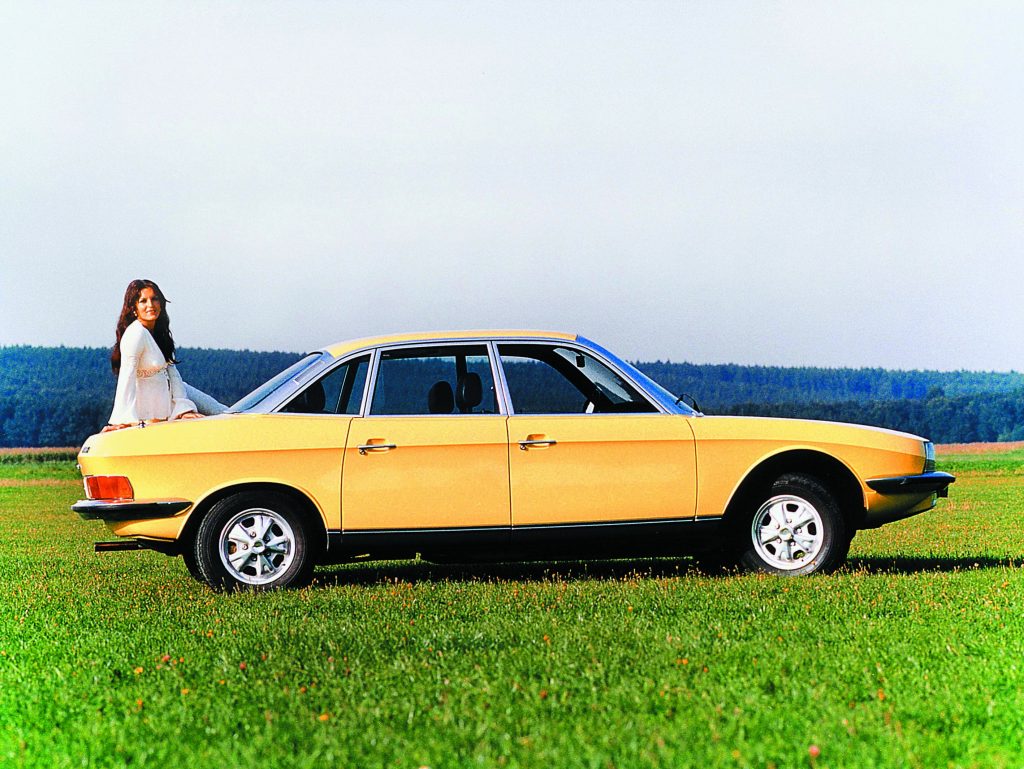
“It will run up to an indicated 100 to 110mph with consummate ease, the Wankel smooth as a turbine, and with no more noise than the rush of wind past the car, like a jet aeroplane in motion,” he wrote.
“In town driving there is noise from the torque converter and from the cooling fan, but on long runs the Ro80 is a superb motor car.
“One thing is unquestionable – its ability to compress big mileages into a short space of time and to do this without fatigue to the occupants and with a high degree of safety.
“On all-round merit the NSU Ro80 must be rated one of the best family cars in the business.”
But there were a couple of issues – the NSU Ro80 is an expensive car to run, with overall fuel consumption of just under 20mpg and half a gallon of oil required after just 400 miles of driving.
Owner Mr B Webb Ware wrote in the same issue of Motorsport of his experiences after 1,600 miles in his Ro80, extolling the “endearing magic carpet quality” of the ride, and the “seductive engine note” that became quieter and smoother with speed.
He may have been tempting fate when he added: “If I am clear of teething troubles and long-term reliability matches present qualities I shall be very satisfied.”
Ro80 unreliability and rotor tip wear
We don’t know if Mr Webb Ware had many years of happy motoring, but his engine may well have suffered the catastrophic fate of many others.
Felix Wankel’s fears of rotor tip wear proved prescient, as Ro80 after Ro80 was returned to dealers suffering from loss of power, smoky starting and excessive fuel and oil consumption.
Some cars lasted a mere 15,000 miles before an engine rebuild was required, something the NSU factory carried out under a two-year, 24,000-mile warranty.
The main problem stemmed from the material used for the three-section rotor tip – the part that made contact with the housing inside which the rotor revolved.
All three pieces of the tip were made from the same material, with the middle section wearing faster at cold starts than the outer pieces, which became destabilised and allowed combustion products to escape the seals.
All these warranty claims weighed heavily on NSU’s finances, damaged the brand’s reputation, and affected the public’s desire to take a punt on the new technology.
By 1969, an ailing NSU was acquired by Volkswagen and merged with Auto Union, owners of the Audi brand to create the Audi NSU Auto Union AG company.
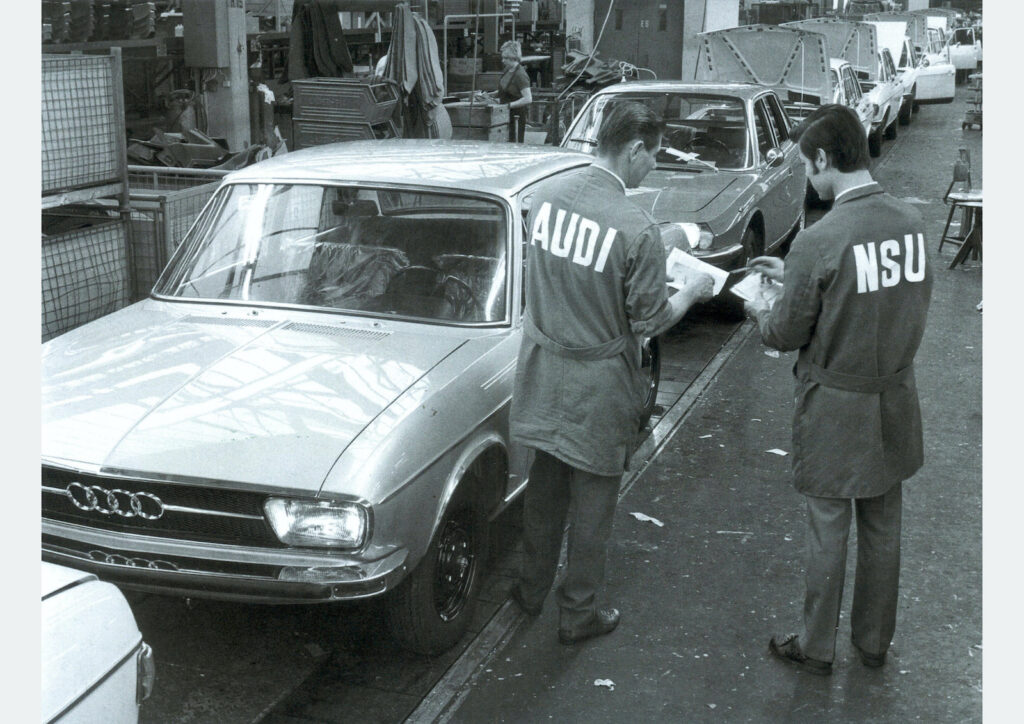
It wasn’t the end of the road for the Ro80 though – not yet, anyway.
The centre section of the rotor tip was redesigned using a much more hard-wearing metal and, by 1970, most of the reliability problems had been resolved.
NSU Ro80 into the ‘70s
Sales of the Ro80, perhaps understandably, never hit the heights that NSU needed, and production numbers halved in the early 1970s as consumer confidence was rocked and the car’s inherent poor fuel economy deterred buyers during the oil crises of the time.
The car continued to attract good reviews in the motoring press, but with caveats.
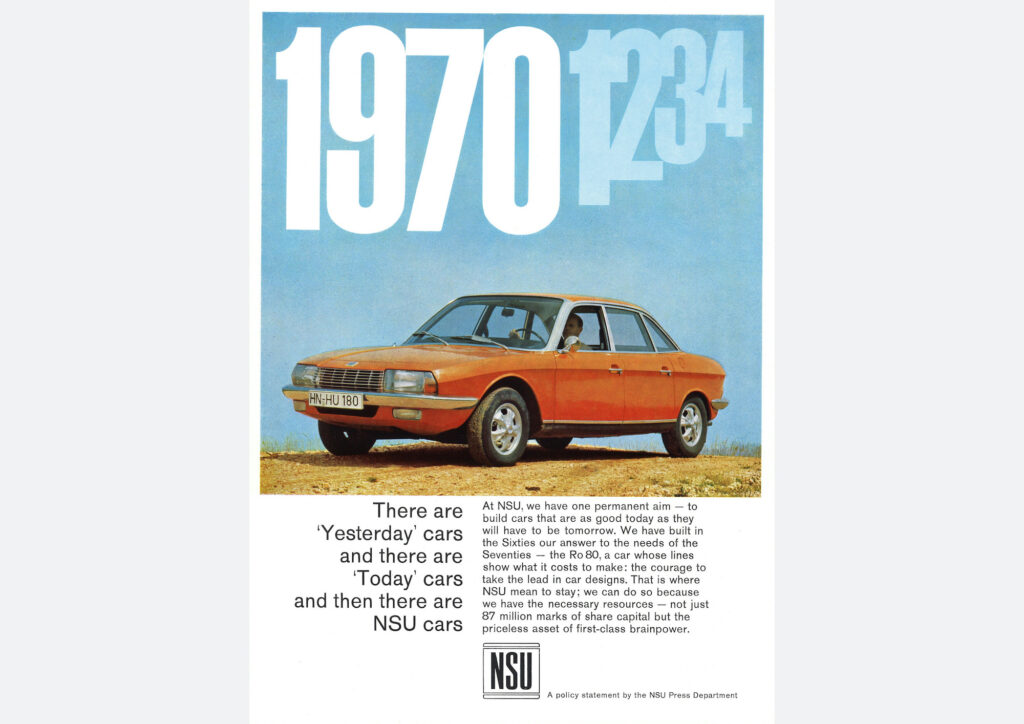
Testing the Ro80 in 1973, CAR magazine praised NSU’s no quibble warranty repairs, “mind you, if they had not done this, the Ro80 would have long ago become an extinct species”.
Up against a Citroen DS and BMW 520, the magazine wrote that “for sheer smoothness and general unobtrusiveness, the Ro80 is incomparably good – it simply hums along”.
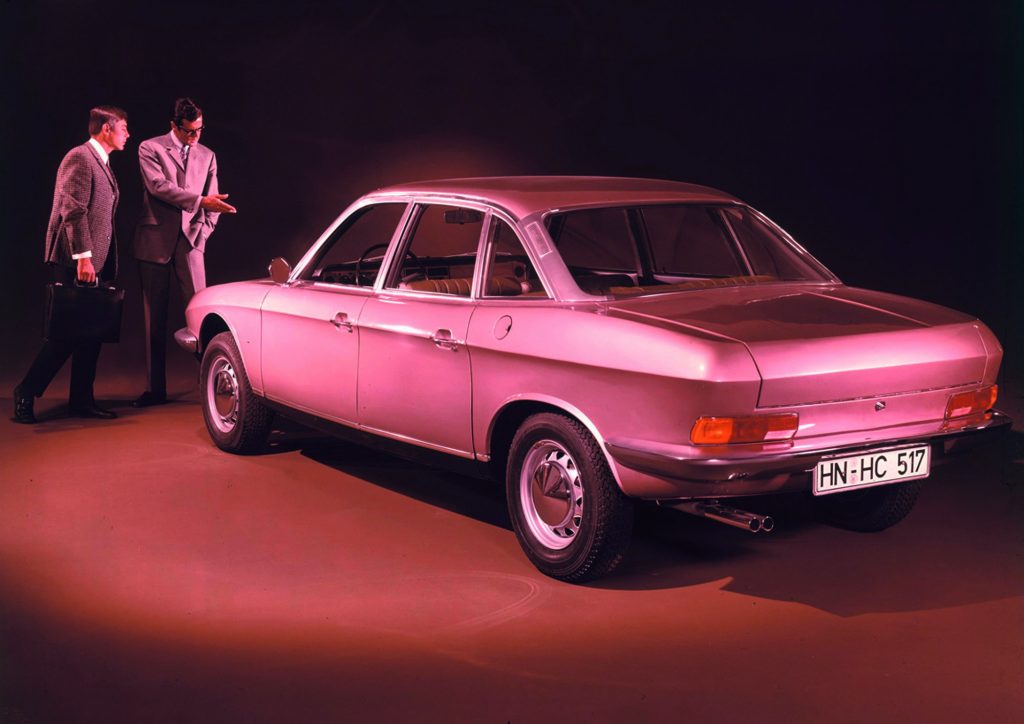
Its steering was “as near to perfect as one is likely to encounter this side of £6,000”, while the car had the best seats and a superior ride – some feat given the DS was in opposition.
However…as a buyer, could you really trust a car that had suffered so many problems, even if they told you all their issues were behind them?
CAR thought maybe not.
“We would love to love the NSU Ro80, but all the time there would be this nagging doubt in our mind about its durability. Sure, the factory have shown themselves as being jolly decent types by super-honouring the engine warranty and there is no doubt that the Wankels are getting better day-by-day, but it would be a bit like marrying a reformed husband-poisoner.”
The end of NSU and the Ro80
With the Prinz 4, 1000, and 1200 phased out in 1973, the Ro80 was the only NSU-badged car remaining, and it was not faring well compared to the success of its similar-sized sister car, the Audi 100.
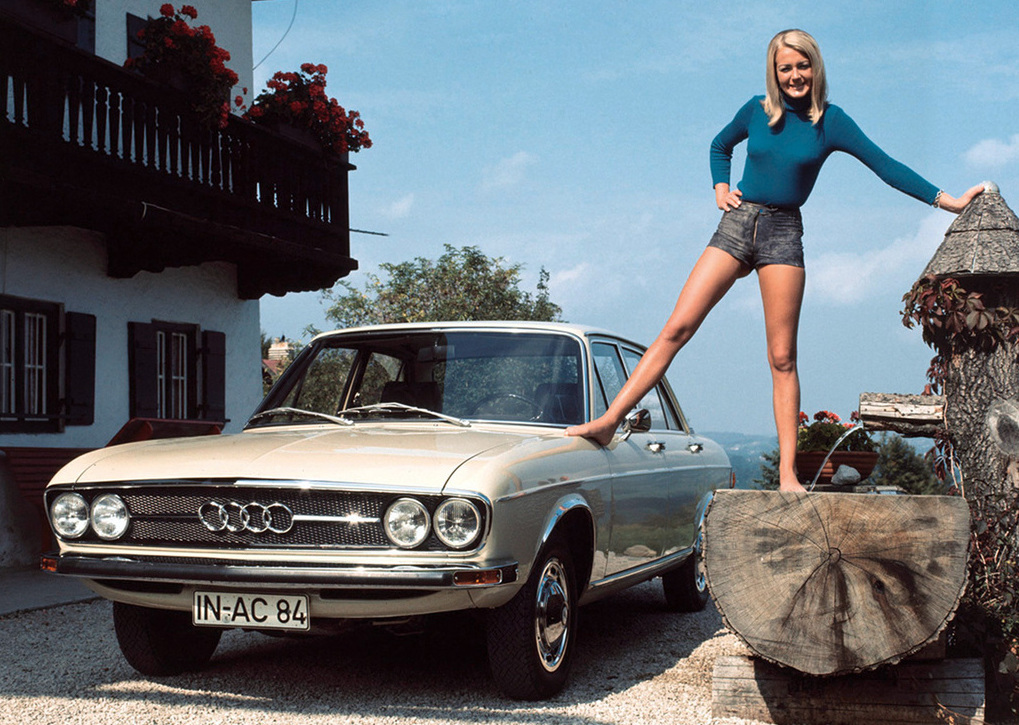
Volkswagen clearly saw Audi as its upmarket brand going forward and, with production of the Ro80 falling to 2,000 a year, its days were numbered.
The last of the roughly 37,400 Ro80s built in 1977 was almost unchanged on the outside, but the company had continued to develop the engine, now a refined single-plug rotary unit.
When Volkswagen pulled the plug on the car, and the NSU brand, it was left to Mazda to carry the torch for Felix Wankel’s rotary dreams.
The company name was shortened to Audi AG, with the Neckarsulm factory switched to producing the 100 and 200 cars, and later the Audi A6, A8 and R8 supercar.
In its design and technology the NSU Ro80 was years ahead of its time, but its engine – without which it would probably never have been built – was always its Achilles heel, underdeveloped at launch and excessively thirsty.
Over the years, some owners opted to throw away the Wankel engine entirely and use a variety of conventional piston units, including the Ford 2-litre V4 – which helped with economy and reliability, but upset the car’s balance and was coarse in the extreme compared with the smooth rotary.
The Ro80 today is very much a cult classic, and surviving cars tend to be reliable, with all of its teething troubles happily resolved by a dedicated band of enthusiasts and specialists.
As for the rotary engine, with Mazda ending production of the RX8 in 2018 it’s unlikely we will ever see another purely Wankel-powered car in production.






